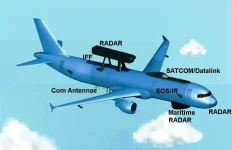- Views: 1K
- Replies: 1
A new assessment by a respected military aviation analyst suggests that the Indian Air Force (IAF) may have inflicted far greater damage than previously known during Operation Sindoor.
According to Austrian analyst Tom Cooper, a total of 19 aircraft belonging to the Pakistan Air Force (PAF) were damaged during the engagement, a figure that would mark one of Pakistan's most significant aviation setbacks in recent history.
Mr. Cooper’s detailed analysis claims that the damage was inflicted both in the air and on the ground.
Six Pakistani aircraft were reportedly damaged during aerial combat, a figure that includes a critical Airborne Warning and Control System (AWACS) aircraft.
An additional thirteen aircraft were struck while secured inside hangars, indicating a high degree of precision. These grounded aircraft reportedly included another AWACS plane, an Il-78MP aerial refuelling tanker, a C-130 transport aircraft, and ten fighter jets.
While Indian authorities have not officially confirmed these specific numbers, the claims made by Cooper add to a growing body of analysis suggesting that Operation Sindoor was a highly successful and complex mission.
The targeting of high-value assets like AWACS, which serve as crucial "eyes in the sky" for monitoring airspace and directing combat operations, would severely hamper Pakistan's air defence capabilities.
Similarly, damaging an Il-78MP tanker would limit the operational range and endurance of the PAF's fighter fleet.
The reported success of strikes on aircraft within their hangars points to exceptional intelligence gathering and meticulous planning by the IAF.
Such an attack would require precise coordinates and the use of advanced penetration munitions capable of destroying hardened targets.
This aspect of the operation underscores a sophisticated capability to neutralize enemy air assets on the ground, preventing them from ever participating in a conflict.
This new information provides a deeper perspective on Operation Sindoor, portraying it as a comprehensive offensive action designed to significantly degrade the PAF's ability to wage war.
While Tom Cooper's assessment is yet to be officially verified, it has sparked considerable discussion among military experts about the tactical superiority and strategic reach demonstrated by the Indian Air Force during the operation.





